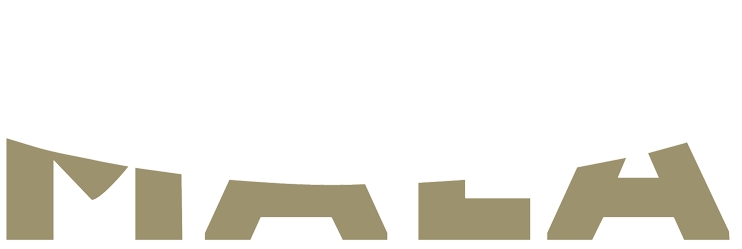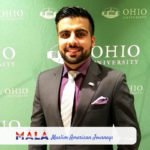Mohammad Hashim Pashtun describes his journey from displacement to belonging — and back to displacement, and finally belonging again.
I was born in Kandahar city, but only 6 months later, our family migrated to Quetta, Pakistan, a small town with a substantial minority of Afghan refugees.
As a refugees in Pakistan, my father made sure we studied Afghan Geography and History, Pashto, and Dari. We learned about our roots. We are Pashtuns of Kandahar, our tribe is Barakzai, one of the biggest tribes in Afghanistan. Our family originated in the Arghistan district of Kandahar. I know my forefathers, up to my great-great-grandfather, who served in the realm of King Abdur Rahman Khan in 1880s. My great-grandfather served with King Amanullah Khan during Third Afghan-Anglo War and was Commander of the Southern Zone. Even today, there is a road and a square in Kandahar City named after him.
I finished school, up to 10th standard, in a Catholic School – St. Francis Grammar School – in Quetta, Pakistan. It was run by Christian missionaries and I was enrolled there because of its higher quality of education. This was probably my first exposure to non-Muslims, though I never felt the difference.
Being an Afghan refugee, news of the Afghan Jihad was a dominant theme in our lives. Always we had the feeling of being strangers, although the people of Pakistan surely welcomed us – but it was still not my own country. I always had this alien feeling even while holding my own ID Card, singing my National Anthem, waving my National flag, and cheering for my National Team/Representatives on a global stage.
Things have changed, especially after 2001. I remember the feeling when we crossed the Pakistani border and entered Afghanistan for the first time after we left in 1989. I remember jumping out of our car and looking around with this feeling – as if I own this whole area, the land, the trees, the people, the air. I surely experienced the real feeling of “Independence.” I remember singing my National Anthem at the Afghan-Turk High School (where I finished 11th and 12th grades), cheering for athletes on the soccer and cricket teams, waving my flag, and having my own National ID Card (Tazkera).
Before coming to the U.S., it was great to be living with my family, in my own society, where Afghan customs are practiced and Islam is followed. There were some problems, like lack of basic services, and of course concerns about security. But I felt I belonged, I had a great group of friends. But as I wanted to pursue graduate education in the U.S., I felt pulled to move. The lifestyle and social norms are much different here in the U.S., compared to Afghanistan.
I got involved in Student Senate at Ohio University, starting as intern and getting promotions over time to Vice Commissioner for International Affairs, Commissioner for International Affairs, Vice President, and Chief Justice. Along with that I served on various Presidential Student Committees. I was elected twice as President of International Students Union, leading over 2,000 international students from over 113 countries. Additionally, I served as Multicultural Leadership Ambassador, which gave me opportunities to present speeches about Islamophobia, stereotypical perceptions, and diversity issues. I think I was treated fairly and I don’t think a white American ever had an advantage over me just because of race, gender or religious belief.
When I was elected as the President of International Students Union, the association was going through its worst times. My Predecessor was impeached for corruption, there was mistrust among Executive team, and the organization had lost all its good image and connections throughout the University. I took it as a challenge to restructure and rebrand the organization, and to connect the missing links within the organization. I focused on developing and strengthening its core principle of Diversity, introduced a new logo and new slogan, and updated the constitution and rebuilt connections with other major organizations to attract more funding. To make sure that my vision and hard work did not go to waste, I established lasting bonds with other institutions on campus so that my successors could build on them.
I was lucky enough to make friends from other groups, such as Caucasians, African-Americans, Hispanics, and Arabs. I learned a lot from them, their cultures, customs, and their history. There were many terms and trends that I was not aware of, but that are very common in US. For example, the use slurs for African Americans, or the term “LGBT,” which I had never heard before.
My greatest accomplishment has been the establishment of the United Meditation Room – a place where people from all the beliefs or even without beliefs can come together, meditate, pray, and reflect. It is also a place where people from diverse backgrounds can co-exist in peace. This vision that I had for Ohio University, home to more than 30,000 students, took me three years to turn into reality.
Your identity depends on how the term “identity” is defined. My priority is my actual identity in terms of how I know myself, not based on how I am perceived.
Sometimes identity can conflict with principles, and I prefer the principles over identity.
I do travel back and forth to Afghanistan. I am assisting WISE, an organization for women’s empowerment, Asar Educational Services Organization, and also Afghan Youth Entrepreneur Organization. I am committed to helping the country I come from. I am trying to be a good role model for youth and am helping guide them towards more educational and professional development opportunities.
True leadership is not afraid of failure and is not afraid of experimenting. Leadership listens more before action. Leadership carries hope, positive energy, and optimism. Leadership hears a diverse range of opinions before making a decision. This is leadership, to me.
I studied in Pakistan, India, and now in the U.S., and have traveled around the world. Our world is getting more diverse: there are diverse opinions, diverse beliefs, and diverse approaches to life. But we still have a lot in common. Similarities unite us and differences may divide. Let’s focus on similarities to stay connected and co-exist, and let’s celebrate our diversity as different colors of the rainbow which are distinct, disparate, but bonded.
Some people visit cemeteries to remind themselves to be thankful for their lives. I visit to realize that I have another day to live. Let’s make the most out of it.


